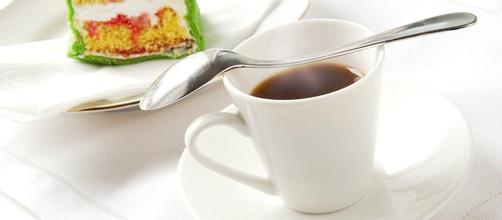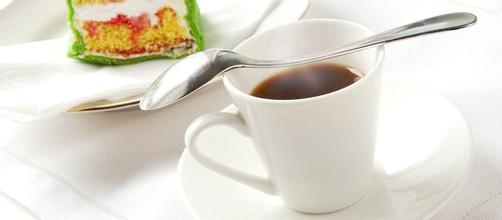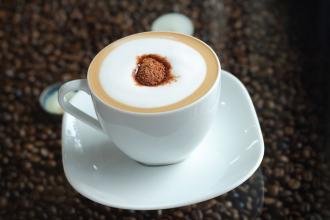Fragrant Indonesian Coffee Brand Variety Manor producing area Flavor and Taste characteristics of Lassuna Waha
The island of Sulawesi, located between Borneo and New Guinea, is sometimes called Celebes. The coffee produced on the island is full of grains and rich in flavor. The best coffee beans come from Kalossi and Rantepao in the southern part of the island. Among the many tastes of spleen, try Celebes Kalosi coffee.
On the whole, Indonesian coffee has a strong flavor, mellow taste, slightly syrup flavor and excellent acidity, and its two main export markets are Germany and Japan, which reflects the excellent quality of the coffee. What attracts consumers is the unique quality of its Arabica coffee beans. You can add milk or cream to high-quality Indonesian coffee without worrying about affecting its taste. Indonesian coffee is divided into six grades, the best of which is AP. But no one knows exactly what these two capital letters stand for.
When ships replaced sailboats, coffee produced on these islands faced the same problem as Indian coffee from Mysore-that is, consumers were so used to coffee affected by long-distance travel that they were reluctant to accept the taste of this "fresh" coffee. To solve this problem, the Indonesian government has tried its best to copy coffee affected by long-distance travel, and they have "stored" coffee beans for up to a year. However, what is not satisfactory is that the taste of this wetted coffee is not so widely accepted that it affects the good reputation of its coffee.
However, Indonesia's "stored" coffee, or "journey" coffee, is still produced today. Its sales brands are generally OldGovernment, OldBrown and OolJava.
Although Indonesia produces so much admirable coffee, it is puzzling that local residents prefer Turkish-style coffee to its famous European-flavored coffee, Sumatra and Sulawesi. The three islands have established three major coffee brands, namely, Mantenin Coffee, which is produced in Sumatra, Indonesia, with moderate sour taste and strong aroma; Java Coffee, which is produced in Java, Indonesia, and belongs to Arabica Coffee; and Sulawesi Coffee, full of grains and rich aroma. Robusta coffee, which accounts for 90% of the total output, is of the highest quality in the world.
In the mid-17th century, coffee trees were introduced to Indonesia by the Dutch (some official sources believe that earlier). The first batch of coffee from Java was sold to Amsterdam in 1712. However, coffee trees in all plantations were destroyed by coffee rust in 1877, and Robart coffee trees had to be introduced from Africa to replace the original species. Today, only 6% of coffee beans and 10% of coffee beans are Arabian coffee beans. Indonesia is the world's leading producer of Robert's coffee, producing 6.8 million bags of coffee a year, with more than half of the coffee coming from small plantations, accounting for about 90 per cent of the total production.
Java produces exquisite aromatic coffee with relatively low acidity, delicate taste and good balance. Java coffee has a better aroma and acidity than coffee from Sumatra and Sulawesi. The best plantations in Java are Blawan, Jambit, Kayumas and Pankur. Java mocha is a mixture of Java coffee and Yemeni mocha coffee.
Sumatra, the second largest island in the Indonesian archipelago, is the center of Indonesia's oil industry, and its rubber and timber are also famous exports. However, the coffee in Sumatra is more eye-catching, which is similar to Java coffee, but with slightly heavier grains. The coffee beans of Mandheling and Ankola are also highly valued, and the former is even regarded as the most full-grained coffee beans in the world.

Important Notice :
前街咖啡 FrontStreet Coffee has moved to new addredd:
FrontStreet Coffee Address: 315,Donghua East Road,GuangZhou
Tel:020 38364473
- Prev

Very light aroma of Indonesian cat poop coffee producing area Manor flavor characteristics Arabica coffee
Sumatra Lintong Rasuna is slightly different from the mantenin that I tasted before. I thought that the spice-type coffee would show more spice characteristics in this brewing, but I found that the fruit acidity of the coffee is bright, the taste is very clean, the slight acidity beats like a dancer on the tip of the tongue, and the sweetness coming out of the middle is very high.
- Next

A fruity coffee manor in Honduras. Introduction to Santa Barara Manor
In Honduras, coffee-producing areas are divided into six major areas, spread to the west and south, namely Santa Barbara (Santa Barbara), El Paraiso (El Paraiso), Copan (Copan), La Paz (La Paz) and Comayagua (Olan Mound), with an average planting height of more than 1100 meters above sea level. The variety of coffee is Elaraby
Related
- Does Rose Summer choose Blue, Green or Red? Detailed explanation of Rose Summer Coffee plots and Classification in Panamanian Jade Manor
- What is the difference between the origin, producing area, processing plant, cooperative and manor of coffee beans?
- How fine does the espresso powder fit? how to grind the espresso?
- Sca coffee roasting degree color card coffee roasting degree 8 roasting color values what do you mean?
- The practice of lattes: how to make lattes at home
- Introduction to Indonesian Fine Coffee beans-- Java Coffee producing area of Indonesian Arabica Coffee
- How much will the flavor of light and medium roasted rose summer be expressed? What baking level is rose summer suitable for?
- Introduction to the characteristics of washing, sun-drying or wet-planing coffee commonly used in Mantenin, Indonesia
- Price characteristics of Arabica Coffee Bean Starbucks introduction to Manning Coffee Bean Taste producing area Variety Manor
- What is the authentic Yega flavor? What are the flavor characteristics of the really excellent Yejasuffi coffee beans?

